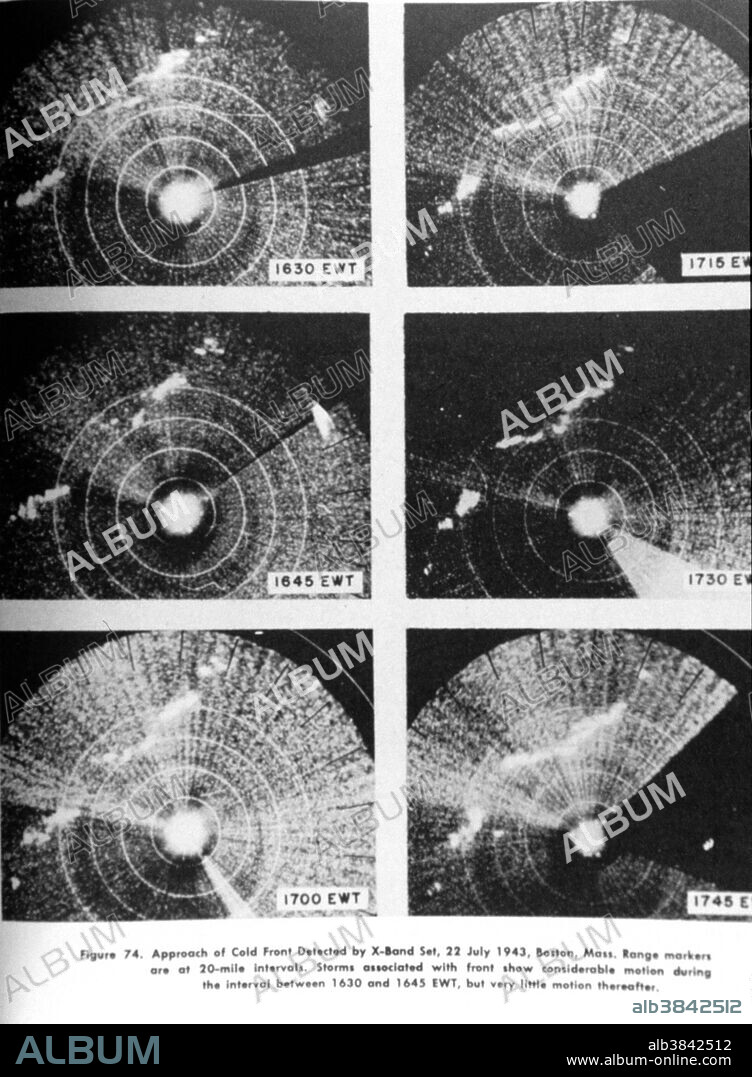alb3842512
Cold Front, X-Band Radar, 1943

|
Añadir a otro lightbox |
|
Añadir a otro lightbox |



¿Ya tienes cuenta? Iniciar sesión
¿No tienes cuenta? Regístrate
Compra esta imagen

Título:
Cold Front, X-Band Radar, 1943
Descripción:
Ver traducción automática
Approach of a cold front as observed on an X-Band radar set at Boston in July, 1943. This is perhaps the oldest preserved image of meteorological phenomena as observed by radar. A cold front is the forward edge of an advancing mass of cold air that pushes under a mass of warm air. Cold fronts often cause precipitation; water vapor in the rising warm air condenses and forms clouds, often resulting in heavy rain, thunderstorms, hail, or snow. Winter cold fronts can cause temperatures to drop significantly. Summer cold fronts reduce humidity as drier, cooler air displaces the humid, warmer air. On a weather map, a cold front is depicted as a blue line with triangles that point in the direction in which the cold air is moving.
Crédito:
Album / NOAA/Science Source
Autorizaciones:
Modelo: No - Propiedad: No
¿Preguntas relacionadas con los derechos?
¿Preguntas relacionadas con los derechos?
Tamaño imagen:
3000 x 4084 px | 35.1 MB
Tamaño impresión:
25.4 x 34.6 cm | 10.0 x 13.6 in (300 dpi)
Palabras clave:
1943 • AMERICA • AMERICANO • ATMOSFERICO • BLANCO Y NEGRO • BOSTON • CIENCIA • CLIMA • ESTADOS UNIDOS DE AMERICA • ESTADOS UNIDOS • FENÓMENO NATURAL • FENOMENOS NATURALES • FENÓMENOS • HISTORIA • HISTORICO • METEOROLOGÍA • METEOROLÓGICO • METEREOLOGIA • METEREOLÓGICOS • OBSERVÓ • OLA DE FRIO • S. XX • SIGLO XX • TORMENTA
 Pinterest
Pinterest Twitter
Twitter Facebook
Facebook Copiar enlace
Copiar enlace Email
Email
